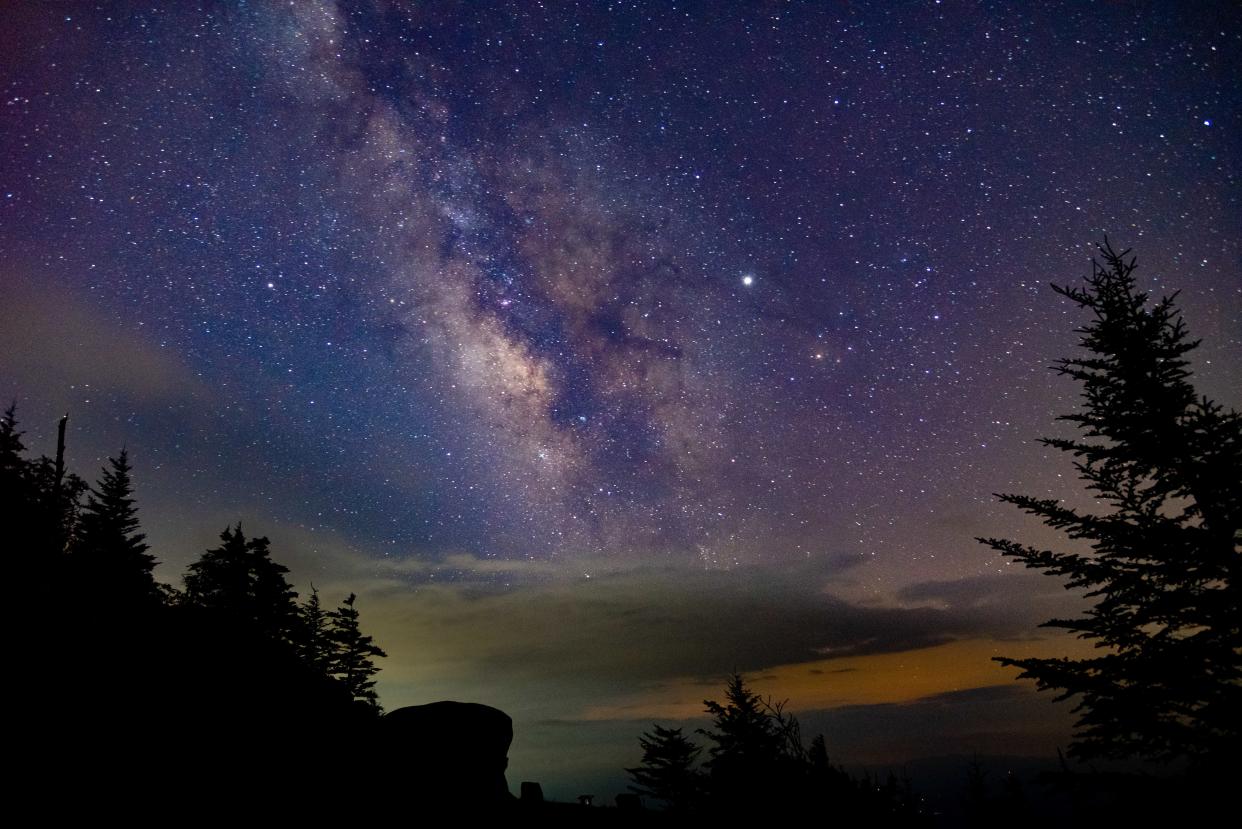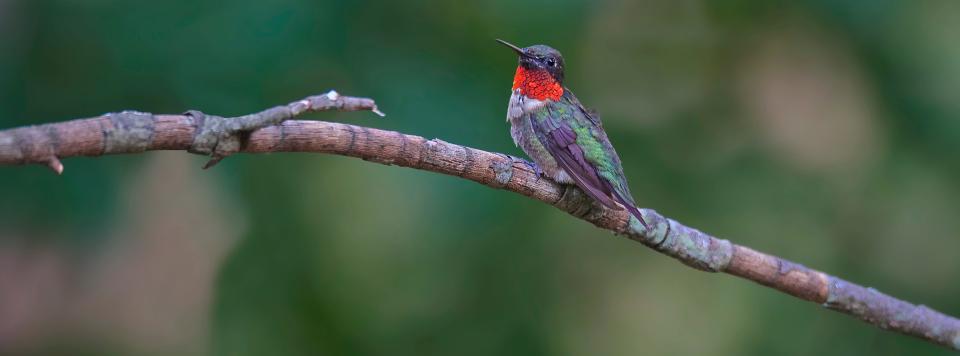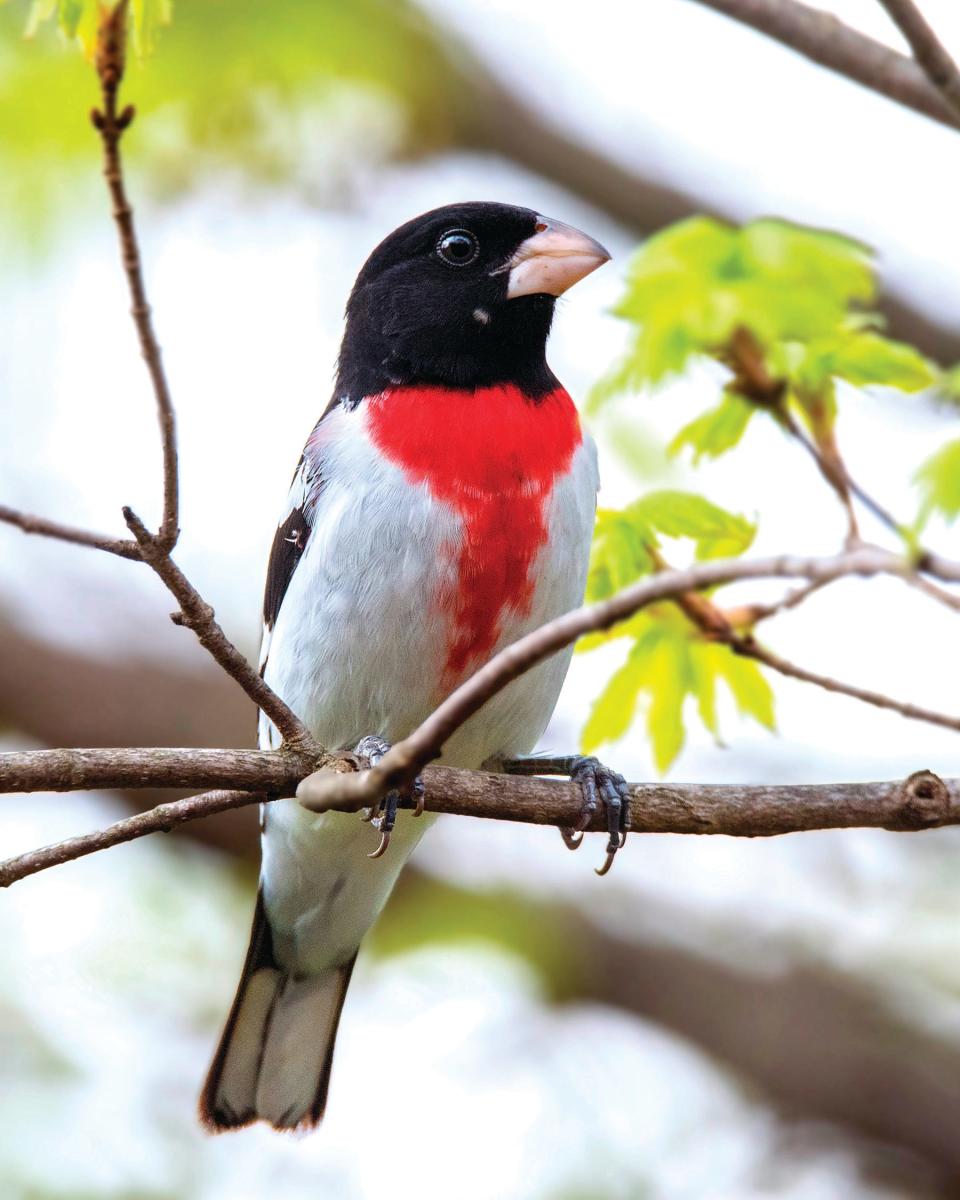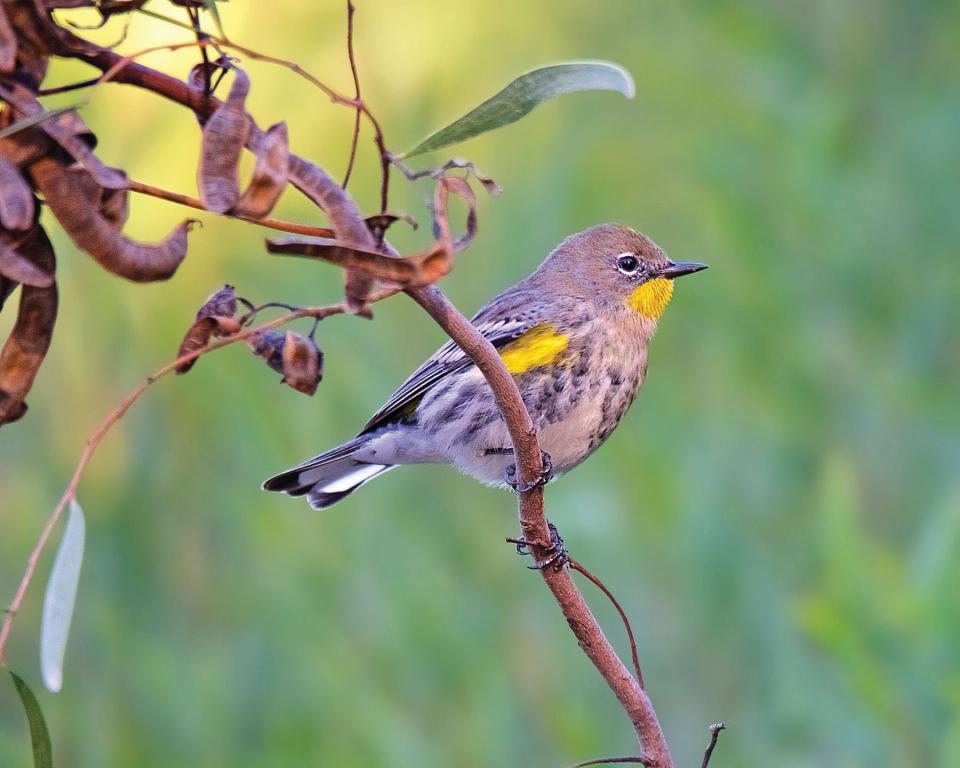Word from the Smokies: Reducing artificial light at night can save thousands of park birds

Great Smoky Mountains National Park is a vital part of the greater southern Appalachian region through which many bird species migrate to and from their breeding grounds in warmer climates. Birds traveling at night have used the stars for millennia to help them navigate safely to their destinations.
But thousands of birds that regularly visit the Smokies are becoming disoriented, losing their way, and dying en route to Mexico and Central and South America. And the cause is simple: too much light.
“As urban areas grow, birds become dazzled by the glow of cities and fly into the urban centers rather than forging a safer route through protected lands,” said Sarah Branagan. “Once in the city, they face problems like window-collisions, cars, feline predators, and a lack of resources to sustain them on their arduous journeys.”
Branagan, who grew up in Brevard, is a senior at UNC Asheville majoring in environmental management and policy with minors in professional writing and psychology. After taking a field ornithology class in the summer of 2019, she became passionate about birds.
► Word from the Smokies: Time to try birding beyond the backyard
► Word from the Smokies: Park birds may have benefited from Clean Air Act
With encouragement from Assistant Professor of Environmental Studies Andrew Laughlin, Branagan joined the UNCA Audubon Chapter and became its president. Then she learned that artificial light at night (known as ALAN) is responsible for killing many birds that visit both Asheville and the Smokies by interfering with their migration.
“In addition to bringing joy to people across the world, birds are also excellent environmental indicators, meaning they are often one of the first species to warn us of environmental concerns,” she said. “Asheville is a growing urban area, and ALAN is increasingly more present as we need to light more hotels, parking garages, streets, and sidewalks for safe nighttime visibility.”
Branagan concedes this lighting is needed but believes it should be thoughtfully placed and shielded to “ensure we are only lighting what needs to be lit, not the night sky.”

Laughlin, who inspired Branagan’s activism, teaches Principles of Ecology and Field Biology, Avian Ecology and Conservation, Wildlife Ecology and Management, and Urban Ecology. His research interests include movement and migration ecology and animal responses to environmental change, with a focus on birds.
“There are many migratory birds that breed in the Smoky Mountains: black-throated green warblers, black-throated blue warblers, wood thrush, ovenbird (another type of warbler), veery, scarlet tanager, rose-breasted grosbeak, eastern wood-pewee,” said Laughlin. “These are all birds that could potentially fly over urban areas, including Asheville, on their way to and from the Smokies.”
Recognizing that more and more birds are dying each year due to excess lighting impacting migratory paths in Western North Carolina, Asheville Mayor Esther Manheimer recently proclaimed the months of March through May, and September through November, as “Bird Migration Awareness Months.”

► Word from the Smokies: Small species play big role in Great Smoky Mountains
► Word from the Smokies: Saving aquatic wildlife becomes park ranger’s passion
Branagan, now a member of the board of directors for the Blue Ridge Audubon Chapter, helped lead the mayor’s initiative, which encourages all Asheville businesses, residents, and building managers to turn off non-essential lighting from 11 p.m. to 6 a.m. during migration months to reduce bird fatalities.
The Coalition for a Bird-Friendly Asheville (birdsafeavl.org) and Blue Ridge Audubon are partnering with the city to create education programs to inform businesses and building owners of the problem, solutions, and moneysaving opportunities related to extinguishing unneeded lighting.
“This program is really about building awareness for responsible lighting,” Branagan said. “We need lights that improve city visibility and promote nighttime safety, not upward-shining lights illuminating hotel facades or unshielded street lighting where that energy is lost into the sky.”
Just like us, birds need three main resources to survive: food, water, and shelter.
Anyone can help birds at home by planting native plants that provide nectar, fruits, seeds, and shelter. They can also build bird houses to provide nesting space for cavity-nesting birds like bluebirds, chickadees, and nuthatches. Providing fresh, clean water through a birdbath or small pond is also beneficial for birds to drink and bathe in. Lastly, you can advocate for bird-friendly practices like a lights-out proclamation in your own city or neighborhood. For example, Madison County’s Wolf Laurel community has restrictive covenants requiring outdoor lights be extinguished at 11 p.m. year-round.

► Word from the Smokies: Marker honors pioneering Japanese photographer George Masa
More: Word from the Smokies: Taking a walk across ancient land
“Migration is one of the most vulnerable periods in the annual cycle of birds and probably where most of the mortality occurs,” Laughlin said. “Lights-out initiatives, and other initiatives that help migratory birds like this, are important components of keeping the birdlife of the Smokies at full capacity.”
Branagan adds that by helping birds migrate safely through our mountainous area, humans will not only increase biodiversity and ecosystem strength but also reduce our energy consumption and cut emissions associated with electricity.
“Reducing our city light pollution is a highly achievable goal that not only helps birds but also reduces our carbon footprint and helps us to achieve broader energy-saving goals,” Branagan said. “By dimming our lights here in Asheville, we will help keep our light-following migratory birds on track so they can reach the safety of their breeding grounds in the Great Smoky Mountains and other protected public lands.”

Frances Figart is the editor of “Smokies Life” magazine and the Creative Services Director for the 29,000-member Great Smoky Mountains Association, an educational nonprofit partner of Great Smoky Mountains National Park. Reach her at frances@gsmassoc.org.
This article originally appeared on Asheville Citizen Times: Save Great Smoky Mountains Park birds by cutting artificial light

